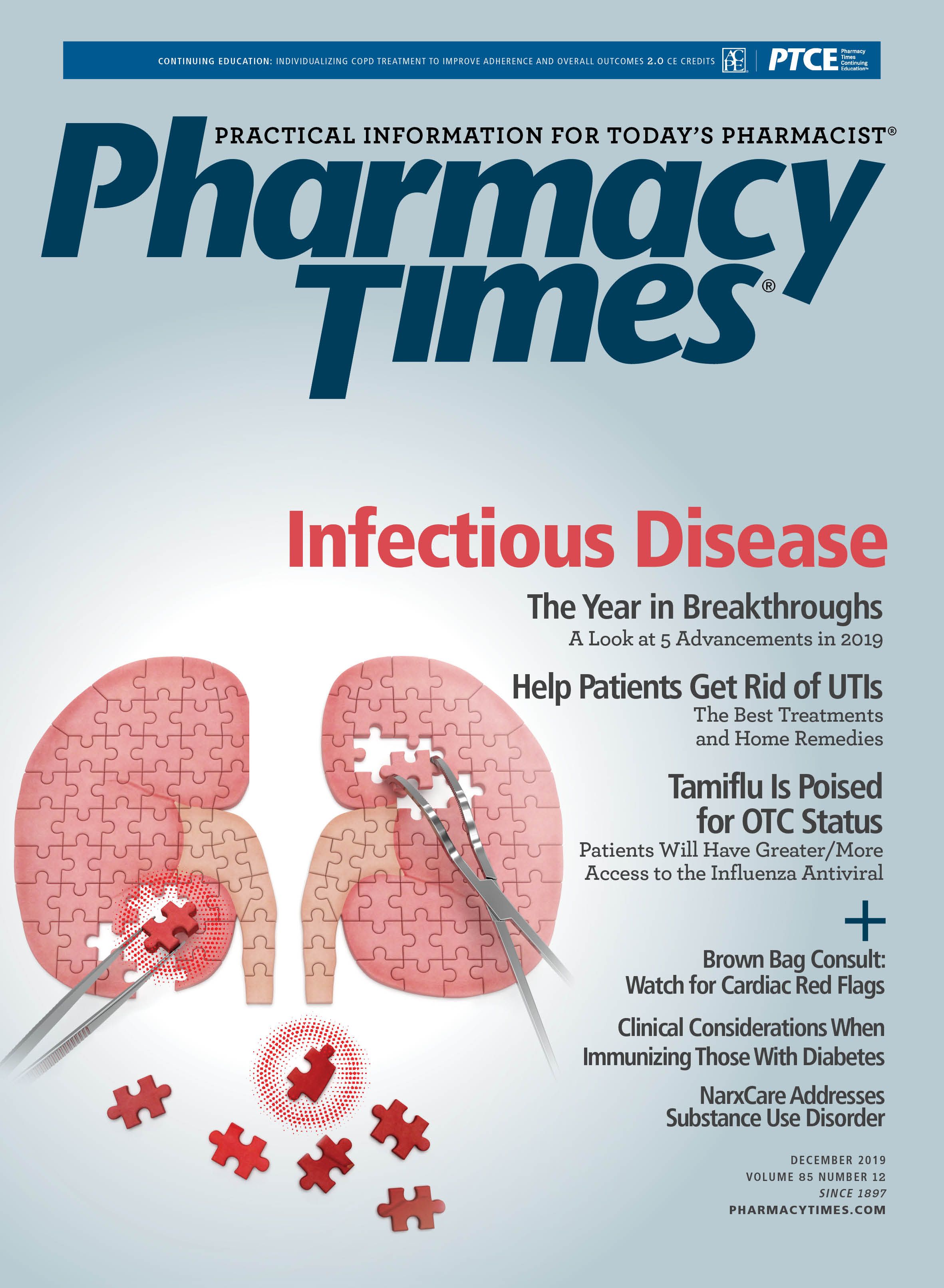Publication
Article
Pharmacy Times
Identifying and Properly Treating Hepatitis C Are Keys to a Cure
Author(s):
Educate patients about infection control, lifestyle changes, signs and symptoms, and ways to prevent transmission
About 3% of the global population, or about 170 million people, are infected with the hepatitis C virus (HCV), according to World Health Organization estimates.1,2
HCV causes liver inflammation and often results in the blood-borne infection hepatitis C.2,3
In the United States, hepatitis C has been the prevailing blood-borne infection, with about 30,000 to 35,000 new cases diagnosed annually.2,3 About 3.2
million people have chronic hepatitis C, and many of those who are infected do not know about their condition. Chronic hepatitis C is the most frequent
reason for mortality associated with liver complications as well as the need for liver transplants. Hepatitis C causes 10,000 to 12,000 deaths1,2 and costs about $10 billion annually.3,4 Recently, hepatitis C surpassed HIV infection as a leading cause of death.1
Clinical Representation
Hepatitis C has an incubation period of 2 to 12 weeks.2,4 Clinical presentations of patients with acute hepatitis C are often variable, ranging from asymptomatic to mild, nonspecific symptoms. Reported symptoms may include anorexia, fatigue, fever, inflammation, intolerance to alcohol or fatty foods, mild hepatomegaly, nausea, night sweats, pale stools, pruritis, right upper quadrant pain, upper respiratory infection symptoms, and vomiting.1,2,5 Acute hepatitis C will progress to chronic infection in the majority of patients, and about two-thirds of those will develop chronic liver disease.2
Etiology/Risk Factors
HCV is a ribonucleic virus that infects the functional units of the liver (hepatocytes).6 Six HCV genotypes exist, with significant variations in geographical locations. In the United States, the most common are genotype 1 (about 70%) and genotypes 2 and 3 (about 30%).1,2,4,5 Genotype 4 is uncommon in the United States and seen mostly in Africa and the Middle East. Genotype 5 is found primarily in South Africa, and genotype 6 is prevalent mainly in Southeast Asia. Specific genotypes do not predict disease outcomes, though they are helpful in determining medication regimens, treatment duration, and the probability of treatment response.1
The primary mode of transmission of hepatitis C is via infected blood or bodily fluids. In new cases, about 60% are from intravenous (IV) drug users, particularly through shared needles and indirectly shared drug paraphernalia, and 20% are from intercourse, especially high-risk sexual activity and male-to-male sex.2 Other risk factors include household exposure (eg, using the same razors or toothbrushes), occupational exposure (eg, workers in health care facilities or needle stick injuries), other types of drug use (eg, intranasal drug use), and piercings or tattoos from unsterilized tools. The number of hepatitis C cases due to blood transfusion or solid organ transfusion and hemophilia concentrates has drastically declined from the early 1990s and late 1980s, respectively, with improved blood screening tests starting in the 1990s. Less common is mother-to-fetus transmission.1,2,4,5,7 In the developing world, childhood vaccinations and male circumcision are potential risk factors.5 Rural populations have a 2-times-higher rate of hepatitis C than urban populations, due in part to more exposure to the aforementioned risk factors.7
Baby boomers account for nearly three-quarters of all patients with chronic hepatitis C in the United States. However, results of new reports show a new group of IV drug users with rapidly rising hepatitis C numbers: urban Caucasian people 24 years or younger who have taken oral prescription opioids prior to using heroin.1,2,4,7 Even with all the recognized risk factors, 10% of patients with hepatitis C have none,2 and many patients cannot determine an infection source.1
Diagnosis, Differentials, and Complications
Clinicians often make a diagnosis through serologic assays for hepatitis C antibodies, as well as via molecular tests for viral nucleic acids.2 HCV antibody presence is indicative of contact with HCV, though it does not prove active infection.5 Additional tests to consider are a complete blood count, liver function tests, and a comprehensive metabolic panel to rule out other causes.3 A liver biopsy may also be required to evaluate the extent of liver damage.2 Differential diagnoses to consider include α1-antitrypsin deficiency; autoimmune hepatitis; hemochromatosis; hepatitis A, B, D, or E; HIV infection; mononucleosis; portal hypertension; and Wilson disease. Known complications of hepatitis C include aplastic anemia, B-cell lymphoma, cardiovascular issues, hepatocellular carcinoma, liver cirrhosis, Sjögren syndrome, and type 2 diabetes.1,2
Interventions
Hepatitis C may resolve on its own, but treatment is suggested for those with chronic hepatitis C or cirrhosis and liver transplant patients.1,2 Treatment consists of avoiding medications metabolized by the liver, using specific direct-action antivirals, and supportive care. Watch for adverse effects and treatment effectiveness, with laboratory testing and follow-up. Cure rates are almost 95% when hepatitis C is treated appropriately.2,5 There is no vaccine for hepatitis C, though ones for hepatitis A and B exist.1,2 Educate patients about infection control, lifestyle changes, signs and symptoms, and ways to prevent transmission.3
References
- Wong R, Russell C, Kruger D. Hepatitis C virus infection: signs, symptoms, and screening. Clin Advis. 2016;37-43.
- Hepatitis C. CDC website. cdc.gov/hepatitis/hcv/index.htm. Updated October 22, 2019. Accessed October 11, 2019
- Olson M, Jacobson IM. Role of the nurse practitioner in the management of patients with chronic hepatitis C. J Am Acad Nurse Pract. 2011;23(8):410-420. doi: 10.1111/j.1745-7599.2011.00603.x.
- Guss D, Sherigar J, Rosen P, Mohanty SR. Diagnosis and management of hepatitis C infection in primary care settings. J Gen Internal Med. 2018;33(4):551-557. doi: 10.1007/s11606-017-4280-y.
- Miller MH, Dillon JF. Early diagnosis improves outcomes in hepatitis C. Practitioner. 2015;259(1787):25-27.
- Olson MC, Gardenier DG, Jacobson IM. The revolution of hepatitis C treatments: review for nurse practitioners. J Nurse Pract. 2015;11(1)116-123. doi: 10.1016/j.nurpra.2014.10.013.
- Gordon SC. Hepatitis C virus detection and treatment in rural communities. Gastroenterology Hepatol (N Y). 2018;14(12):720-722.







